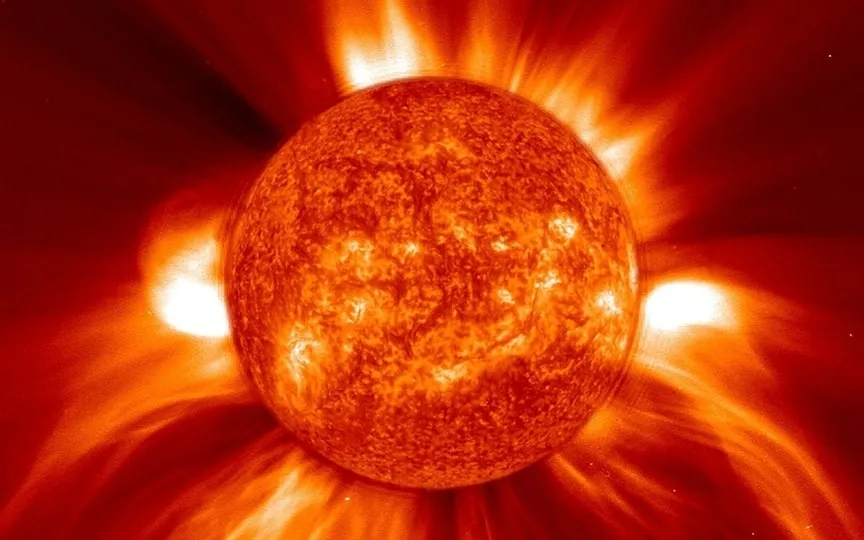NOAA Alerts of Impending Geomagnetic Storm of G1-Level Intensity
NOAA has issued a warning stating that Solar Cycle 25 has exceeded scientific expectations, with a significantly higher occurrence of sunspots and solar storm eruptions than initially anticipated by experts. This development may have unfavorable implications for Earth. The cycle commenced in December 2019, coinciding with a substantial increase in solar activity. Consequently, we have observed a series of perilous solar storms impacting our planet.
Recently, on July 14, the most visually dramatic Solar Cycle 25 flares occurred on the surface of the Sun, which emitted dark plasma from the Sun’s southern hemisphere, a SpaceWeather.com report revealed. Surprisingly, this explosion originated in the magnetic canopy of AR3370, a previously hidden and subtle sunspot. One of these coronal mass ejections (CMEs) escaped the Sun on July 14, “followed by another faster CME on July 15,” the report added. Now NOAA has warned that this CME is ready to hit Earth soon!
CME impact on Earth – Geomagnetic storm
NOAA has warned that a G1 geomagnetic storm is likely to hit Earth on July 18. “NOAA model says second CME will wipe out first to form ‘cannibal CME’ to hit Earth on July 18,” Space. Weather bulletin suggested.
What is cannibal CME? NASA explained in detail how a cannibal CME works. When multiple CME clouds originate from the same location, a magical phenomenon occurs where the next cloud is able to overtake and incorporate the leading cloud, thus becoming even stronger. This absorption process leads to an amplification of the magnetic intensity, further increasing the strength and power of the assimilating CME. This is called a cannibal CME.
Is Radio Blackout Expected?
NOAA experts have warned in a three-day weather forecast that solar activity is expected to be low, with the possibility of an M-class flare and a small chance of a single X-class flare until July 18. This can lead to R1-R3/Strong radio power failure.
How do scientists monitor space weather?
NASA explains that scientists use a variety of ground-based and space-based sensors and imaging systems to monitor activity at different depths of the sun’s atmosphere. A fleet of NOAA satellites and some NASA science satellites are currently in use. For example, CME alerts come from SOHO, STEREO beacon images from the other side of the Sun; and SDO’s ultra-high-resolution images, while NOAA’s DSCOVR satellite monitors solar storms and the behavior of the Sun.




